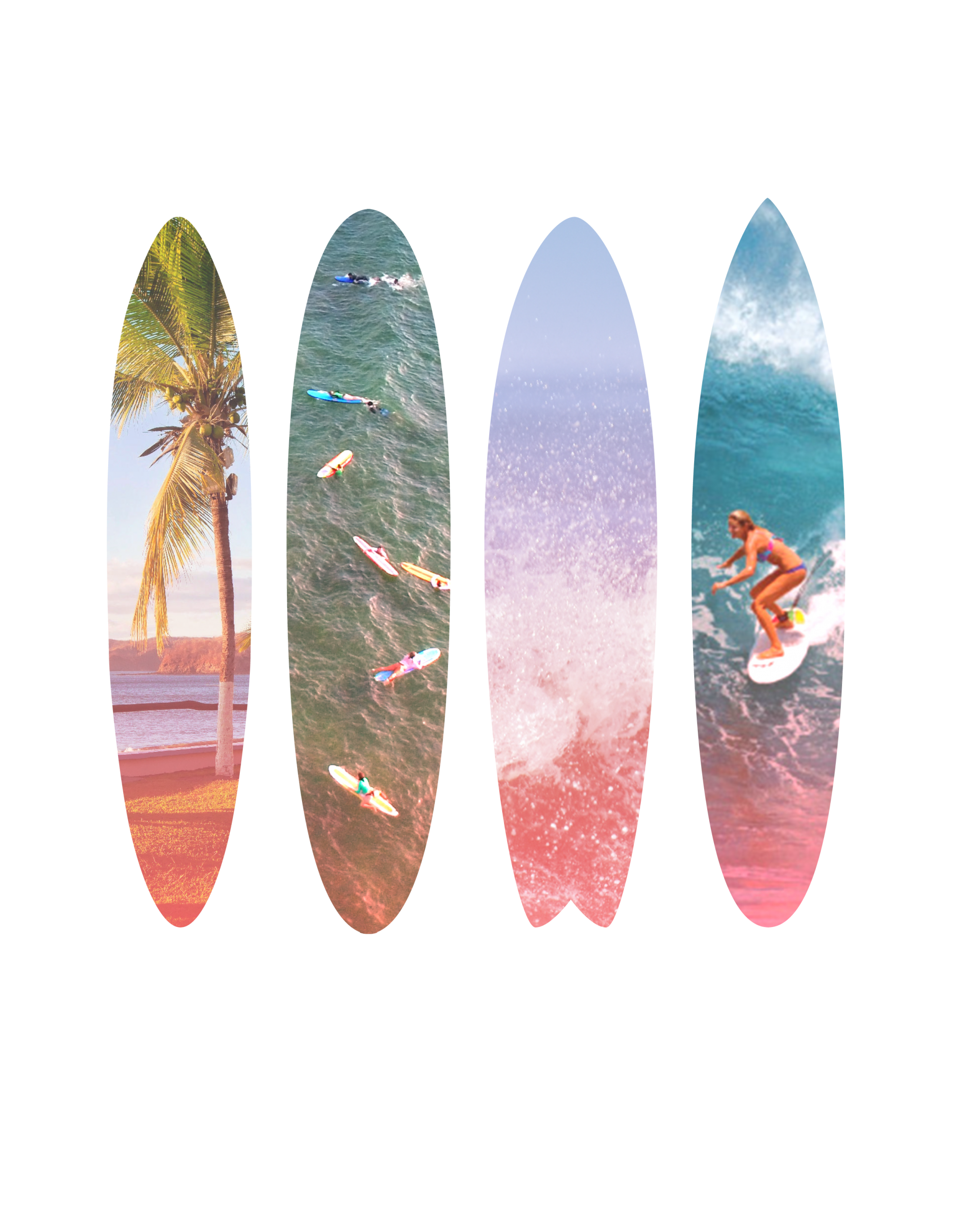Surfboard Shopping Guide.
Experienced surfers work with their shaper to come up with just the right board or boards to use for different types of wave conditions and breaks. It’s not just a simple matter of going into a shop and picking out the nicest looking board. It’s a process of taking into consideration your skill level, body weight, where you want to surf and what the waves potentially look like. Of course, it’s also a matter of whether you are going to rip from bottom to lip, fly into tricks or choose a beautiful glide or nose ride.
Here’s a general look at what each type of surfboard offers. Keep in mind that with further individual specifications, a board can do even more than what’s noted.
Shortboard
These are thinner, shorter, high-performance boards that need to be pumped from rail to rail, with pressure on the back and alternating to the front. Shortboards are great for steep, fast and powerful waves of some size. Because of the speed, a surfer can launch into the air for more challenging maneuvers or power surf up and down the line. Achieve lots of rocker, pointy nose and usually a 3-fin setup. Takeoff is closer to the peak, so strong paddling is necessary.
Funboard
Sometimes called an egg, the funboard generally comes between 7 and 8 feet long. It has a wider nose, gentle rocker, and the same fin setup as a shortboard. The extra stability of these boards offers a nice easy ride in smaller waves, but they also handle well when it gets a bit larger out there. Funboards are a good transition for a longboarder who wants to move shorter, but keep up an easier paddle, maybe out more towards the shoulder.
Longboard
Historically, the longboard was the original wave ride. And it’s come a long way since those heavy wooden planks with no fins. Today, logs of 8 feet and longer are the best option for a smaller wave as the extra floatation can help a surfer get into a knee-to-shoulder roller easily. Glide with a single fin or stabilize with a traditional 2 plus 1 setup. The extra volume holds up the front end for noseriding. Be prepared to catch more waves out there, with a lot of graceful style.
Fish
Here’s your best bet for buoyancy — the option of a shortboard style but with easier access to rides in smaller waves. It’s all about the volume on these surfboards, which are generally around 6 feet and under. They have fin setups of double or even quads, and a tail that, well, looks like a fish: wide with a deep cut in the middle.
Gun
Guns are made for the bravest souls who take on the biggest, most hollow waves. They are longer, with less width, a pointy nose and a pointy tail. For those huge, sometimes vertical drops, take out the gun for double overhead and higher.
Hydrofoil
Over the last decade, hydrofoil boards are gradually making their way into the lineups. In the paddle out, they look the same as any other shortboard, but below the surface is the hydrofoil — a mounted ski that acts as a keel — causing the board to rise above the water with speed. How does that work? Since waves are energy moving through water, the hydrofoil taps into this energy attaining speed.
Malakai Marinez
Valeria SalustriBoca Barranca
Santa Teresa
Playa Negra
Playa Tamarindo
Playa Dominical
Playa Langosta
Ollie’s Point
Playa Avellanas
Pavones
Witch’s Rock
Playa GrandeWhat Makes a Wave Spit?
The Climate is Changing, Will There Be Waves?
Hurricanes in Costa Rica?
The Importance of Swell Angle
What Makes a Good Surf Spot
What Makes a Good Surf Spot 2
Why Do Waves Break?
Cold Water in Costa Rica?
The Science of Stoke
Tamarindo Spot Check
The Papagayo Winds
How Waves Are CreatedSee all Surf Articles:







